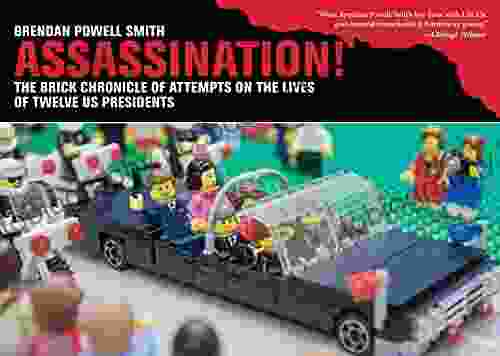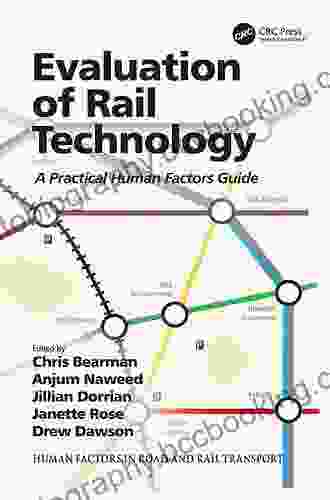Unveiling the Cutting-Edge Realm of Rail Technology: A Comprehensive Evaluation

In the tapestry of transportation advancements, rail technology stands as a beacon of innovation and efficiency. Through the convergence of engineering ingenuity and technological breakthroughs, this remarkable field has revolutionized the movement of people and goods, shaping the fabric of modern societies. This comprehensive evaluation will delve into the multifaceted aspects of rail technology, exploring its evolution, components, applications, and future prospects.
Historical Evolution
The origins of rail technology can be traced back to ancient civilizations, where rudimentary wooden rails aided in the transportation of heavy objects. However, it was in the 19th century that the Industrial Revolution propelled rail technology into a transformative era. The invention of the steam locomotive by George Stephenson in 1814 marked a pivotal moment, ushering in an era of unprecedented mobility and economic growth.
5 out of 5
| Language | : | English |
| File size | : | 8832 KB |
| Text-to-Speech | : | Enabled |
| Enhanced typesetting | : | Enabled |
| Word Wise | : | Enabled |
| Print length | : | 344 pages |
| Screen Reader | : | Supported |
Over the subsequent decades, rail technology witnessed continuous advancements. The transition from steam to diesel and electric locomotives brought increased efficiency and speed. The of high-speed rail systems in the latter half of the 20th century further pushed the boundaries of rail transportation, enabling travel at speeds exceeding 300 kilometers per hour.
Components of Rail Technology
The intricate world of rail technology encompasses a wide array of components that work in harmony to facilitate safe, efficient, and reliable transportation. These components can be broadly categorized into:
- Rails: These are the steel tracks upon which trains travel. Rails are typically laid on a bed of ballast (crushed rock) to provide stability and drainage.
- Locomotives: These are the powerhouses of trains. Locomotives provide the necessary traction to pull or push carriages.
- Carriages: These are the passenger or freight-carrying units of a train. Carriages are designed to provide comfort, safety, and storage space.
- Signaling Systems: These are essential safety components that regulate train movement and prevent collisions. Signaling systems use a combination of lights, sounds, and electronic signals to communicate with train operators.
- Track Maintenance Equipment: These are specialized vehicles used to maintain and repair rail infrastructure. Maintenance equipment includes track tampers, ballast regulators, and rail grinders.
Applications of Rail Technology
The versatility of rail technology has led to its widespread adoption in various transportation applications, including:
- Passenger Transport: Rail networks play a vital role in moving people within and between cities, towns, and countries. Urban rail systems, such as subways and light rail, provide efficient and environmentally friendly means of public transportation.
- Freight Transport: Rail lines are essential for the efficient movement of large volumes of goods over long distances. Freight trains transport a wide range of commodities, including raw materials, manufactured products, and agricultural produce.
- High-Speed Rail: High-speed rail systems have revolutionized long-distance travel. These trains operate at speeds significantly higher than conventional trains, reducing travel times and making intercity journeys more convenient.
Future Prospects
The future of rail technology holds immense promise for continued innovation and advancements. Here are some key areas where we can expect significant progress:
- Maglev Technology: Magnetic levitation (maglev) technology utilizes magnetic forces to propel trains without the need for wheels. Maglev trains have the potential to achieve even higher speeds than conventional trains.
- Autonomous Trains: The integration of advanced sensors, artificial intelligence, and communication technologies is paving the way for autonomous trains. These trains can operate without human input, improving safety and efficiency.
- Sustainability: Rail technology is becoming increasingly sustainable. The electrification of rail lines and the development of energy-efficient locomotives are helping to reduce the environmental impact of rail transportation.
Evaluation Of Rail Technology provides an in-depth exploration of this remarkable field, highlighting its historical evolution, key components, diverse applications, and future prospects. From its humble beginnings to its cutting-edge advancements, rail technology continues to shape the way we move and transport goods, fostering economic growth, connecting communities, and unlocking new possibilities for travel and trade. As we look ahead, the future of rail technology is filled with exciting possibilities, promising even greater efficiency, sustainability, and innovation in the years to come.
5 out of 5
| Language | : | English |
| File size | : | 8832 KB |
| Text-to-Speech | : | Enabled |
| Enhanced typesetting | : | Enabled |
| Word Wise | : | Enabled |
| Print length | : | 344 pages |
| Screen Reader | : | Supported |
Do you want to contribute by writing guest posts on this blog?
Please contact us and send us a resume of previous articles that you have written.
 Book
Book Novel
Novel Page
Page Chapter
Chapter Text
Text Story
Story Genre
Genre Reader
Reader Library
Library Paperback
Paperback E-book
E-book Magazine
Magazine Newspaper
Newspaper Paragraph
Paragraph Sentence
Sentence Bookmark
Bookmark Shelf
Shelf Glossary
Glossary Bibliography
Bibliography Foreword
Foreword Preface
Preface Synopsis
Synopsis Annotation
Annotation Footnote
Footnote Manuscript
Manuscript Scroll
Scroll Codex
Codex Tome
Tome Bestseller
Bestseller Classics
Classics Library card
Library card Narrative
Narrative Biography
Biography Autobiography
Autobiography Memoir
Memoir Reference
Reference Encyclopedia
Encyclopedia Bill Barich
Bill Barich Book List Genie
Book List Genie Brad Kessler
Brad Kessler Beth Bernstein
Beth Bernstein Brad Dude
Brad Dude Bart Bossink
Bart Bossink Bernd Heinrich
Bernd Heinrich Benedict Goleman
Benedict Goleman Ben Stoeger
Ben Stoeger Brenda M Spalding
Brenda M Spalding Bob Greene
Bob Greene Bell Hooks
Bell Hooks Bisco Hatori
Bisco Hatori Ben Doughty
Ben Doughty Bernadette Banner
Bernadette Banner Benjamin John Coleman
Benjamin John Coleman Branden Bickel
Branden Bickel Bill Streever
Bill Streever Bobby Mercer
Bobby Mercer Beth Anderson
Beth Anderson
Light bulbAdvertise smarter! Our strategic ad space ensures maximum exposure. Reserve your spot today!

 Christopher WoodsEdgedancer: A Captivating Novella from the Enthralling Stormlight Archive
Christopher WoodsEdgedancer: A Captivating Novella from the Enthralling Stormlight Archive Ryūnosuke AkutagawaFollow ·10.1k
Ryūnosuke AkutagawaFollow ·10.1k Pete BlairFollow ·15.6k
Pete BlairFollow ·15.6k Brenton CoxFollow ·19.9k
Brenton CoxFollow ·19.9k Cody BlairFollow ·14.4k
Cody BlairFollow ·14.4k Dave SimmonsFollow ·14.2k
Dave SimmonsFollow ·14.2k Amir SimmonsFollow ·6.4k
Amir SimmonsFollow ·6.4k Sam CarterFollow ·13.8k
Sam CarterFollow ·13.8k James GrayFollow ·3.4k
James GrayFollow ·3.4k

 Alex Foster
Alex FosterRediscover the Old Testament with a Captivating Graphic...
Prepare to embark on an extraordinary...

 Ross Nelson
Ross NelsonThe Christmas Story: The Brick Bible for Kids
LEGO® Bricks Meet the...

 Anton Chekhov
Anton ChekhovUnveiling the Hidden History: The Brick Chronicle of...
In the annals of American history, the...

 Blake Bell
Blake BellOptions Trading Crash Course: A Comprehensive Guide to...
In the fast-paced and...

 Percy Bysshe Shelley
Percy Bysshe ShelleyUnlock Your Artistic Potential with "The Practical...
The Indispensable Handbook for...
5 out of 5
| Language | : | English |
| File size | : | 8832 KB |
| Text-to-Speech | : | Enabled |
| Enhanced typesetting | : | Enabled |
| Word Wise | : | Enabled |
| Print length | : | 344 pages |
| Screen Reader | : | Supported |











